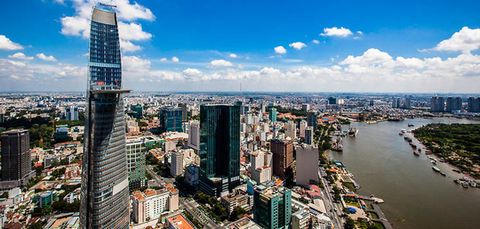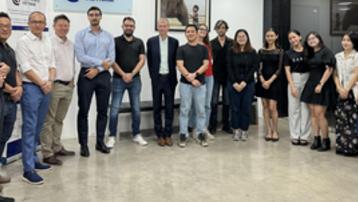Analyses & Etudes
Vietnam's Economic Growth Will Accelerate In 2018 As Investors Flood The Country

The forecasts are in and Vietnam can gloat again after a scare in early 2017. Economic growth next year will reach as high as 6.7% in 2018, better than in 2017, the prime minister predicted in October. The Asian Development Bank forecasts 6.5%, but higher than 2017 and stronger than developing Asia overall. Even the more cautious World Bankestimates more growth next year than this year.
As of early 2017, drought had afflicted farming while mining faced high production costs and declining sales prices abroad. U.S. President Donald Trumps decision in January to withdraw his country from the Trans Pacific Partnershiptrade pact further stood to whack Vietnam as a signatory and major exporter. Policymakers frettedthat the country would miss growth targets.
But those setbacks registered as blips at best for Vietnam’s overall $202 billion GDP. The nominally communist Southeast Asian country that opened to foreign investment in 1986 is still seeing a buildup of that capital from offshore. Foreign investors in the likes of electronics and polyester yarn factories still love Vietnam for its low costs, abundance of labor and matter-of-fact permitting process, analysts on the ground say. Growth has also helped make people wealthier, leaving just 13.5% in poverty, a boon to investors who sell locally.
<fbs-ad position="inread" progressive="" ad-id="article-0-inread"></fbs-ad>
Foreign companies unload capital
“We can reasonably infer that high registered foreign direct investment (FDI) in 2017 will result in high disbursed FDI in 2018, yet another year to post double-digit growth in FDI disbursement,” financial services firm SSI Research says in a note this month.
Registered foreign direct investment increased 44% year-on-year through Dec. 20 to $29.68 billion, according to the Ministry of Planning and Investment. Foreign-operated factories make goods mainly for export and exports had risen 23% to $155.24 billion over the bulk of 2017, SSI Research says. Most offshore investment comes from South Korea, Singapore, Japan and Taiwan, all places where manufacturing costs more than in Vietnam.
<progressive-image src="https://thumbor.forbes.com/thumbor/960x0/smart/https%3A%2F%2Fspecials-images.forbesimg.com%2Fdam%2Fimageserve%2F631937278%2F960x0.jpg%3Ffit%3Dscale" low-res-src="https://thumbor.forbes.com/thumbor/100x0/smart/https%3A%2F%2Fspecials-images.forbesimg.com%2Fdam%2Fimageserve%2F631937278%2F960x0.jpg%3Ffit%3Dscale" enhanced=""></progressive-image><fbs-accordion current="-1">
This picture taken on January 11, 2017 shows a Vietnamese worker welding in the body shop at the Ford automotive plant in the northern province of Hai Duong. (HOANG DINH NAM/AFP/Getty Images)
</fbs-accordion>
Investors come for a labor force that's famously young, trainable and willing to work for a minimum wage of $172 per month. About 60% of the 93 million Vietnamese are of working age. Starting a business is getting more efficient permit-wise and most industries allow foreign investment of 100%, according to this guide by PwC (Vietnam) Ltd.
Major 2017 investments
It's little wonder that Samsung Display made an "additional investment" of $2.5 billion this year, per SSI Research data. The display unit of of South Korean multinational Samsung Electronics will have parked $6.5 billion in Vietnam with the new outlay. In another major foreign investment move, Taiwanese-owned Polytex Far Eastern registered a $490 million factory for polyester yarn production.
Thai Beverage's proposed investment of 25% to 51% in the major Vietnamese brewery Sabeco, though not a direct factory sort of deal, points to further keenness on Vietnam itself.
"The FDI scene in the economy continues to thrive," says Dustin Daugherty, senior associate in business intelligence with the consultancy Dezan Shira & Associates in Ho Chi Minh City. "While a lot of attention is paid to big name deals, the number of small to medium-sized enterprises and smaller multinational company investors continues to tick up, and enthusiasm is very high."
"I think next year will be as good or better than this," Daugherty says. "We are not yet at peak for the growth rate."


